Welcome to week 1 🙂
This week’s lecture looked at ‘the usual suspects’ and asked them pertinent questions about starting a business:
- What do you think are the essential logistical and practical requirements to set up a design studio/business?
- Tell us about your first studio space: How did you find your first studio?
- What is the one piece of advice you can offer about running a successful studio?
What do you think are the essential, logistical and practical requirements to set up a design studio/business?
Simon Manchipp – Someone
Clients are king
1 significant client preferably 3
Cash flow can kill you
Virtual agencies
Accountant as soon as possible
Make promises you can keep — Over deliver
Simon explains how he started up with four others after establishing themselves in an agency — Noone. To keep costs low, they worked from home or tried to find free spaces to work.
Sara Boris
Space
Equipment
Accountant
Wary of spending
Financial cushion
Well surrounded by supporters — friends and peers
Sarah worked in a screen printing studio as part of a collective. A place where many artists and designers would come together to work independently. She discovered that, while it was great to learn from people, she also needed her own space and calm.
Julian House and Adrian Talbot
Be a good designer
Passionate
People person / good listener
Head for business (or someone who has!)
Disguising your ego to work with clients enabling them to feel valued
Listen to what clients want – even if it’s not what’s best!
Lead them down paths
Buy into your brand – existing and previous clients
Intro started small with some influential clients before moving to larger businesses and gaining more clients. Children of the technological revolution, the pair recollect when computers were introduced, and how it was their knowledge of this that improved their employability.
Sam Winston
Dealing with the stress
Studio space
Physically making stuff?
Skill swap – with other professionals
Asking – Can I help you?
Money is important
Be honest with costings – realistic
Respectful and transparent
TRUST
Sam started his design life in a shared studio which he shared with his tutor. Working with lots of people enabled him to realise that there were niches in design where you could still make money. Ultimately, he continued what he enjoyed doing until he found his place in the market
Regular Practice
A computer
Keep costs low
How to find work
Networking – Name dropping
Website? Social media?
See how others work
The Regular Practice lads set up a space with friends and because of its location and price, it worked.
Additional Reading
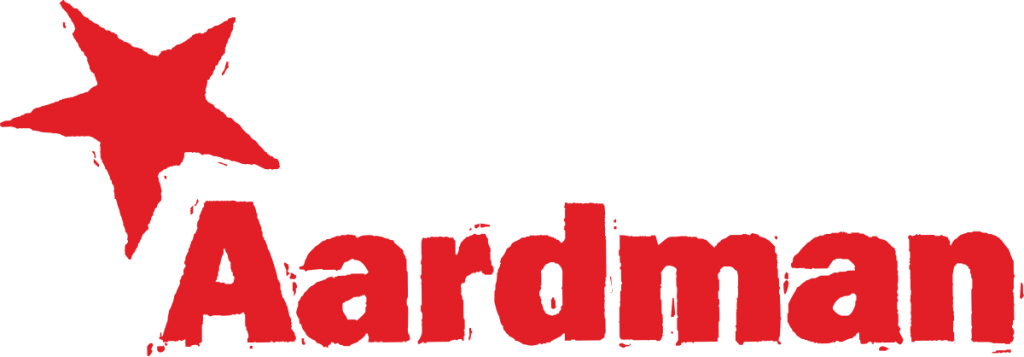
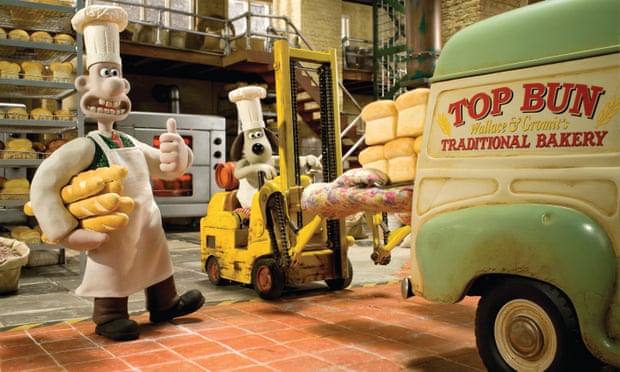
How owners, Peter Lord and David Sproxton, made a plan for continued success and ethos for Aardman.
Both Lord and Sproxton entered the commercial world at an early age – selling hand-drawn animations to the BBC. They are now responsible for an international group that create feature-length films, adverts and video games. They also make millions in revenue from merchandise and licencing rights.
In 2018 the company expected to make £2.5million in profits and made the ultimate decision for a collaborative good. They decided to transfer the ownership of Aardman over to the employees. It was hoped, “it will encourage the team to come up with more creative ideas and ways of working once they have a stake in the company’s future.”
This is a really nice idea. The employees become even more
invested in the company because,
if the company makes money, so do they. It also allows the business to continue with its core beliefs and ideals still in place.
It feels like Lord and Sproxton are looking to take a step back from their creation, but still want to see it succeed. Their hearts and souls have gone into this business and it’s easy to imagine why they don’t want it to end.
After creating an animated world of clay, the creators want their legacy to live on for many years to come. By sharing it with the people who have helped craft it, they believe the ‘voice, culture, references and humour will stand the test of time.
The Designers Republic Reunited
The Designers Republic – a Graphic Design Studio based in Sheffield – has produced amazing designers who have gone on to start up their own businesses.
The interview by Computer Arts in 2016 where some of these designers were reunited, gave a great insight into their business minds.
From the initial conversation with the founder, Ian Anderson, it appears there was no real business model. It followed an ‘organic’ process in which new people were employed as the workloads increased. Not focussing on cash flows caused issues later on for them.
‘Running a business is tough’ – Michael C Plaice
Making the transition from designer to business owner seems to be a difficult process. You are all of a sudden expected to deal with employees and everything that goes with that – i.e. pay, sickness, holidays, human rights etc.
Matt Pyke, now from Universal Everything, highlighted the importance of a business case and that one in place allows your ‘creative work to thrive more’. He also talks about being fallible and not knowing everything he needed to create what he wanted. By employing variously skilled people under his management, he was able to get the results he had hoped for.
Money ≠ Happiness
It sounds like you can either build an empire, in which you are unlikely to be happy, because of just saying yes to everyone – or – you can define who you are, what you represent and your core values and stick within these realms. This will allow you to curate a team that shares these beliefs and provides a stronger holistic approach.
Like attracts Like – Do what you like and you will get more work in that field.
The biggest question for me is – Can you really afford to say ‘no’ when starting in business?
Studio Ethos
Watching the above gave me a real insight into the brand of the business and its core values. They seem genuine and most impostantly, approachable. While watching I noted down the following words which I feel described them:
Culture
Family
Heart
Collaboration
Diversity
Values
Passion
Storyteller
Care
Personal
Real
Honesty
Laughter
Happiness
Visual digestion of research
I have found from previous modules that it helps me to go over my research and produce it visually. Please have a look at that outcome below.
Workshop Challenge
How do you translate your perceived design ethos and positioning to your defined audience?
Revisit the geotagging workshop challenge from Week 2 of the Contemporary Practice module, and explore different studio philosophies through their about button and company statement.
Write an ‘about’ paragraph – an elevator pitch on either your current positioning or one you would like to establish. You may choose to take a speculative approach and envision your global dominance as a design studio superpower. Or as a more humble sole trader who works in a freelance capacity. Have your values changed since beginning the course? Is there a strategic approach your company would communicate to potential commissioners or clients?
Please consider the following in your approach:
- What is the idea?
- How does it work?
- Why does it work?
Imagination
I wanted to make something which stood out for this week. I like to stretch my abilities and experiment in a safe enviornment. I have always wanted to try animation but haven’t really had the opportunity or the time to learn.
Luckily Adobe have created Ch (Charcater) which is really intuitive. I used the following tutorial and my skills in illustrator to create a bespooke character.
Meet Gary:

And his office:

What to say?
Using words I felt represented what I wanted to say about myself I drafted the below.

This wasn’t quite right so I went backe to the brief of what, how and why?
This was my second draft:
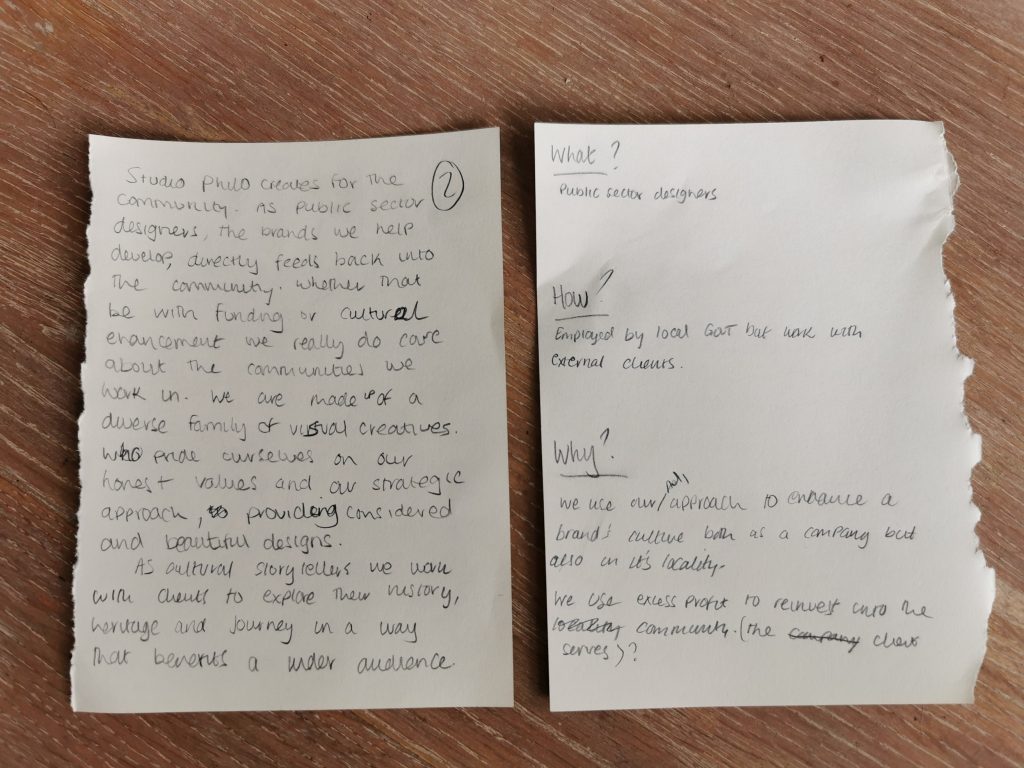
The final drafted script is below:
Studio Philo is made up of a family of public sector designers who create for the community. Although employed by local government, we provide our services externally. As cultural storytellers we work with our clients to explore their history, heritage and journey in a way that benefits both the brand and wider community. We also use excess profits to reinvest in a way which allows for a richer, enhanced society. The team consists of diverse visual creatives and we pride ourselves on our honest values and strategic approach. This, paired with our extensive knowledge and experience, creates considered and beautiful problem-solving designs.
Once the script and character were made the recording of the final scene was relatively straight forward. Below if the final piece.
Collaboration
References
Butler, Sarah (2018) ‘Wallace & Gromit producers hand stake to staff (Links to an external site.)’, The Guardian [online], 10 November. [Accessed 27 March 2019]
Computer Arts (2016) How to Launch and Run a Design Studio (Links to an external site.), [online video]. [Accessed 27 March 2019]
millsustwo (2017) Inside ustwo (Links to an external site.), [online video]. [Accessed 27 March 2019]
Youtube.com. 2019. Creating An Illustrator Puppet (Adobe Character Animator Tutorial). [online] Available at: https://www.youtube.com/watch?v=JL024_E1AUk [Accessed 6 August 2021].

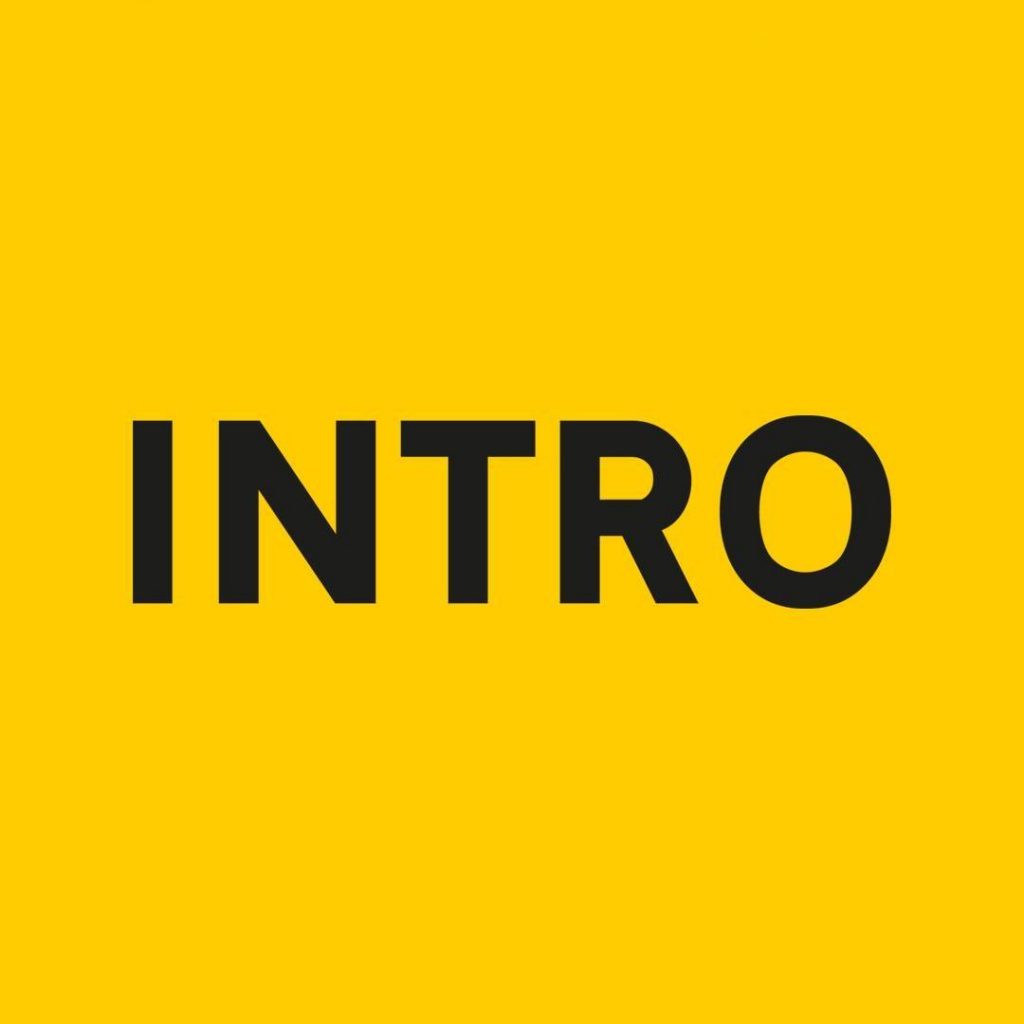

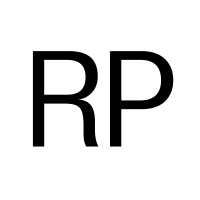


Leave a Reply